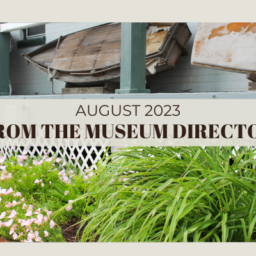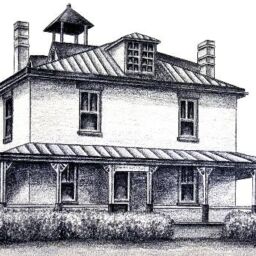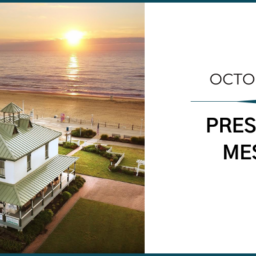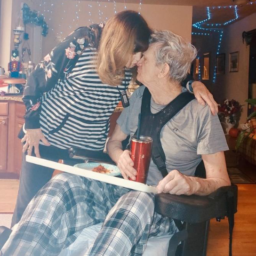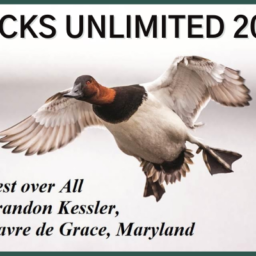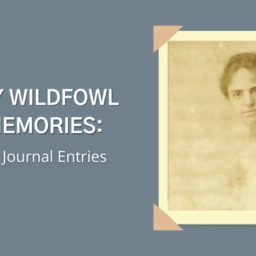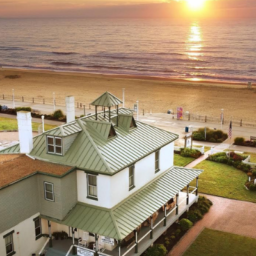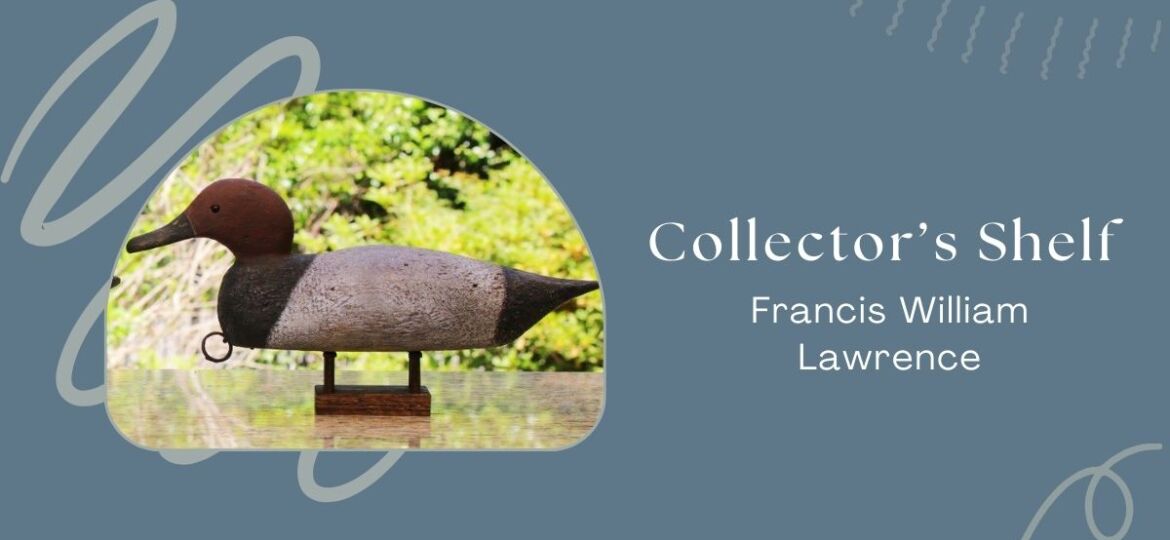
This month’s chronicle reveals an interesting piece of history. The actual brand/stamp on the decoy pictured above is “LAWRENCE,” which we know from the Lighthouse Club Score Book is Francis William Lawrence. Further support is provided by his relationship to the Amory’s; specifically, he is first cousin to Marianne (Lawrence) Amory (1843-1882), wife of Robert Amory (1842-1910).
Robert was a brother of Arthur Amory. Lawrence’s relationship to the Amory’s appears to be the only definitive connection for him to the Lighthouse Club. However, he may also have had a financial relationship with one or more club members. In 1886, he was a founding board member of Brookline National Bank (Brookline is a community in the Boston metro area) and in 1896 was appointed the bank’s president—the bank exists today. He also served as president of the Globe Gas-Light Company of Boston, which contracted with Boston and other New England cities for their street-lighting needs, in addition to selling product to the general public.
While one suspects that Lawrence earned sufficient wealth from his business interests to support his gilded-age lifestyle, it is likely that he need not have worked at all. He was the grandson of Amos Lawrence (1786-1852), prominent cotton merchant and philanthropist of Boston. When Amos passed away, he left a fortune of over $8 million, worth about $250 million in today’s dollars. Amos’s brother and business partner, Abbot Lawrence, also was involved in the railroad business, was twice elected to Congress, and was the Vice-Presidential candidate in 1848. He declined President Zachary Taylor’s offers to be Secretary of the Navy and then Interior, but he did agree to serve as Minister to Great Britain in 1849. (In an interesting aside, one of his daughters married into the Rotch family, which we learned earlier inter-married with the Rodmans.) Amos and Abbot were sons of Samuel Lawrence, who served in the Continental Army, fought in the Battle of Bunker Hill, and became Adjutant to General Sullivan. This likely explains why Amos provided funding for the Bunker Hill Monument.
Delving further into the Lawrence family history, we learn that Francis’s uncle, Amos Adams Lawrence (a son of the aforementioned Amos Lawrence) lived a prominent and interesting life. Amos Adams was the brother of William Richards Lawrence, Francis’s father. Amos Adams Lawrence was also the father of Robert Amory’s wife (recall that Robert was Arthur’s brother), Marianne Appleton (Lawrence) Amory, obviously making Amos Adams Robert Amory’s father-in-law. Amos Adams was also the father of Susan Mason (Lawrence) Loring, who married William Caleb Loring, another Lighthouse Club member. Mr. Loring was appointed an Associate Justice of the Massachusetts Supreme Court, replacing Oliver Wendell Holmes when he became a United States Supreme Court Chief Justice. But far more interesting is Amos Adams Lawrence’s involvement in philanthropy and the politics of his time. He was an ardent abolitionist and strong supporter of a free Kansas following Congress’s adoption of the Kansas-Nebraska Act in 1854. He contributed money to finance the migration of like-minded abolitionist New Englanders to Kansas to help ensure it would be admitted to the Union as a “free state,” and donated funds to establish a community and school in the new state—the community, Lawrence, Kansas, was named after him and the school is today’s University of Kansas. In addition to money, however, Amos Adams also provided firearms to enable his abolitionist immigrants to resist Kansas becoming a slave state. The term “Bloody Kansas” became the result of his arming those immigrants. Amos Adams’ politics and station in society also led him to communicate regularly with gentlemen who were or were to become U.S. Presidents: Abraham Lincoln, Franklin Pierce, Andrew Johnson, and Theodore Roosevelt. He also was a significant financial donor throughout his adult life to Harvard and communicated over the years with a number of the school’s presidents, to include Josiah Quincy who reportedly suggested to Amos Adams’ father that perhaps Amos Adams, who at the time was struggling academically, wasn’t quite ready for college.
Coming to maturity during the waning years of the Civil War, our Francis William Lawrence appears to have been just an apolitical Gilded Age sportsman whose generational wealth afforded him the luxury of a lavish lifestyle, to include frequent sojourns to the Lighthouse Club to hunt ducks and hob nob with his fellow Boston Brahmins.
Larry Davenport and Mark Cromwell


